Prince Edward Island has a highly fragmented natural landscape borne out of a history of colonization that saw extensive land conversion to agriculture. Habitat loss, human disturbance and competition from invasive species continue to present challenges for wildlife.
Island Nature Trust has a constitutional mandate to protect wildlife and that includes those that are residents, migratory and all species at risk. As our capacity allows, we work in partnership with federal and provincial government departments to monitor and protect species-at-risk in PEI. We also conduct research and outreach programming focused on wildlife and their habitats.
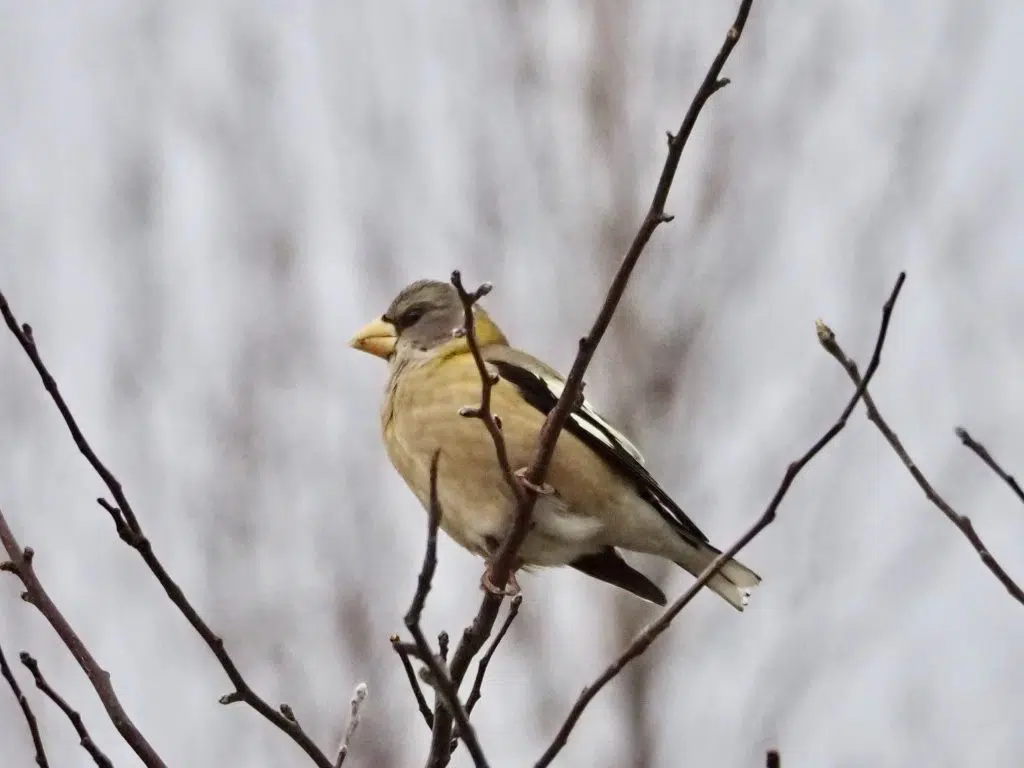
In Canada, species at risk are identified by the independent Committee on the Status of Endangered Wildlife in Canada (COSEWIC) and classed as Endangered, Threatened, Special Concern, Extinct or Extirpated. The Committee’s recommendation for listing a species in one of these categories is based on a comprehensive evaluation of the best available scientific data. Legal protection for these species may then be afforded under the federal Species at Risk Act (SARA) and sometimes also using provincial legislation. PEI does not have an Act that pertains specifically to species at risk. The Prince Edward Island Wildlife Conservation Act includes provisions for the protection of some species at risk and their habitats. Of the 789 species listed on the SARA registry as “at risk”, 33 are native to PEI. Provincially uncommon species are also ranked by the Atlantic Canada Conservation Data Centre (ACCDC) for Prince Edward Island. ACCDC provides a rank of S1 (critically imperilled, known from 5 or fewer PEI locations), S2 (imperilled, 20 or fewer) or S3 (vulnerable, 80 or fewer) for provincially uncommon native plants and animals.
Species at Risk: Piping Plover
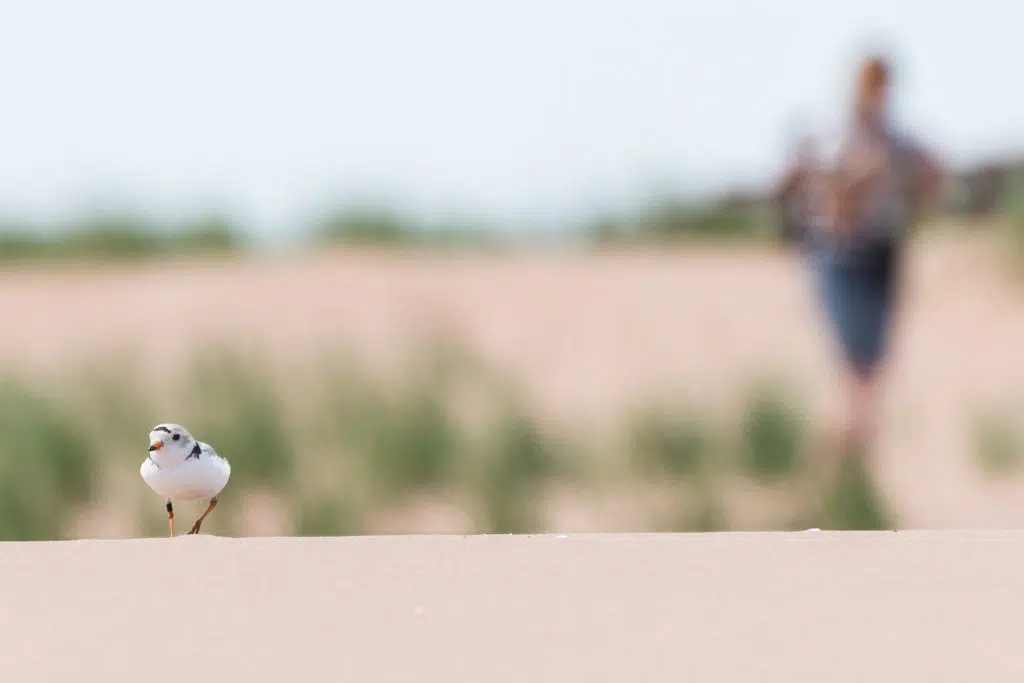
The piping plover (Charadrius melodus melodus) is a small shorebird that nests and raises its young on Atlantic Coast beaches from Newfoundland and Labrador to North Carolina. Piping plovers cannot survive without safe, healthy beach habitat to breed, rest and feed. They are migratory birds that travel back and forth each spring and fall between their northern breeding grounds and southern wintering grounds (along the southeastern US coast and the Caribbean islands). The Atlantic Canada population was listed as Endangered under the federal Species-At-Risk Act in 2003. In Prince Edward Island, there are fewer than 25 breeding pair remaining most years.

Piping plovers are well adapted to the shifting sands of Prince Edward Island’s beaches. Their sand-coloured upperparts and speckled eggs are perfectly camouflaged in this setting. They thrive in PEI’s fragile, dynamic beach – dune ecosystem, where the waves and wind mix up sand and cobble, and the many tidal runs provide habitat for their favourite food of sand worms.
So Why are Piping Plover At-Risk in PEI?
Human disturbance: Piping plover adults, eggs, and chicks are hard to see and beach goers can easily get too close without ever knowing it. Increased human activity near nesting areas can lead to nest detection by predators, abandonment of eggs by incubating adults, chick mortality, and the abandonment of a beach as a traditional breeding site. Staying clear of signed areas, keeping motorized vehicles off beaches, keeping pets leashed, and walking on the wet sand can keep disturbance to a minimum.
Predator pressures: Plover adults, chicks, and eggs are at risk of predation by crows, falcons, eagles, raccoons, foxes, mink, coyotes, and roaming dogs and cats, all of which may be attracted by leftover food and other waste. Encouraging beach-goers and coastal landowners to take trash out with them can help reduce predator visits to the beach. Adult plover alarm calls when pets or people get too close to nests and young will also attract smart crows and foxes; listen for their signals that mean you are getting too close on signed beaches.
Weather: High tides and winds can flood nests or threaten the survival of flightless chicks. As a result of climate change, extreme weather events are predicted to increase in frequency and intensity. This not only affects breeding plovers and their young, but also adult and fledgling survival during migration and on wintering grounds.
INT’s Piping Plover Conservation Program
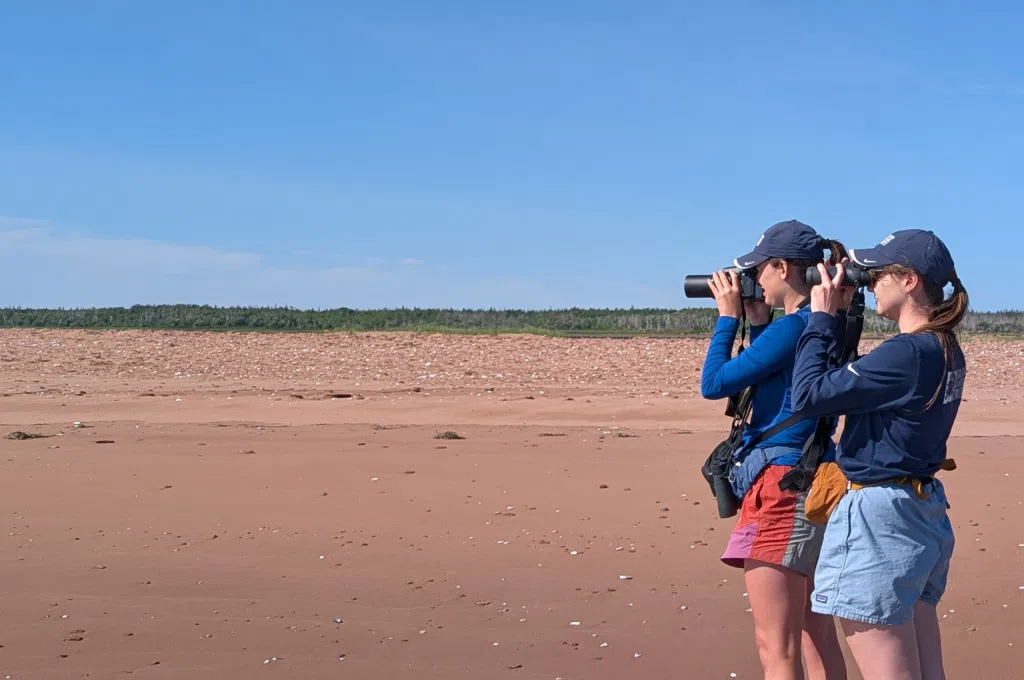
Piping plover conservation on PEI’s provincial beaches began with a handful of concerned volunteers banding together to monitor nests. In 1995, Island Nature Trust began to coordinate their conservation efforts on all PEI nesting beaches that lay outside the PEI National Park. More than twenty years later, Island Nature Trust continues to partner with dedicated volunteers, the Canadian Wildlife Service, Parks Canada and the Province to protect piping plover on their nesting grounds in PEI and provide information to beach-goers during the summer months.
Piping plover nest and rear chicks on sandy, cobbly beaches above the high-tide line on the north shore of PEI, from Jacques Cartier Provincial Park near Alberton to East Point past Souris, and along the east coast down to Wood Islands. In any given year, there are usually 12-20 of these beaches occupied by nesting piping plover. Adults start to appear as early as late March and males and young will leave again as late as mid August. During that time, Island Nature Trust staff and volunteers check beaches for birds and sign those where they are present. When a pair begins to nest, INT staff will install symbolic fencing consisting of posts with rope strung between. This signals that there is a nest on the beach; people must stay out of the fenced area, keep dogs on leash and be careful to give adults and then eventually chicks a wide berth. When chicks hatch they are out and about foraging almost immediately, so if you are on a signed beach, please be aware and share the shore! There are hard-working bird parents and kids that have a lot of food to eat in preparation for a mammoth trek south!
If you would like to become a Plover Beach Guardian, please contact our Species-at-risk team.
For more information on the piping plover in Eastern Canada please visit www.pipingplover.ca
Species at Risk: Bank Swallow
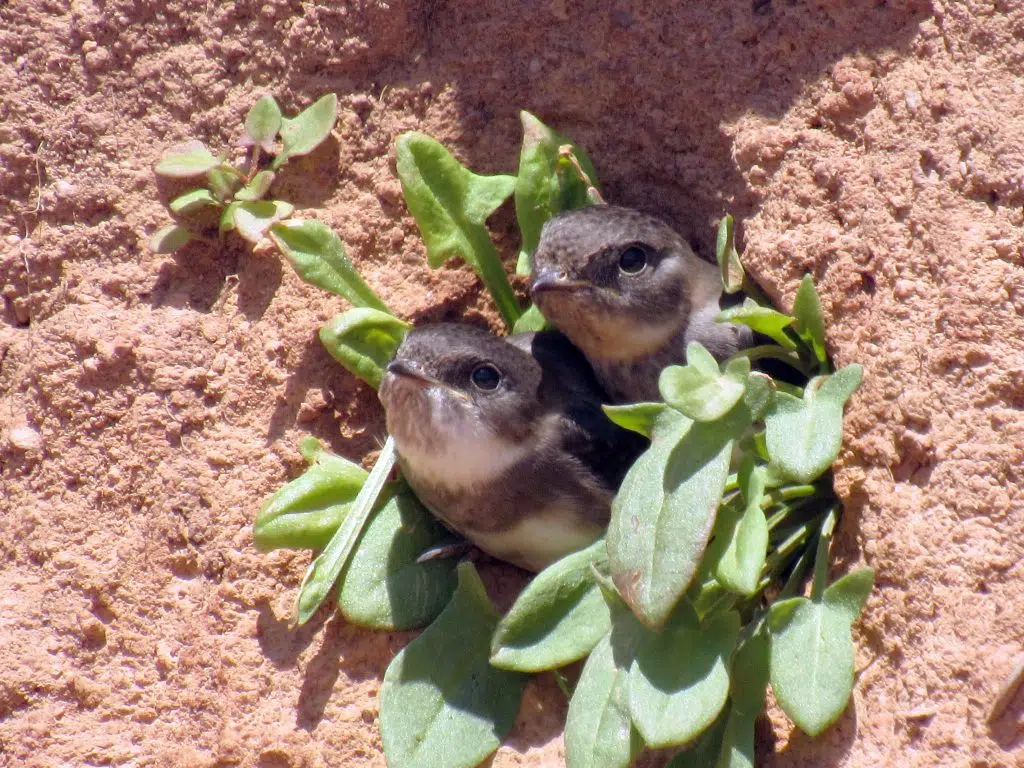
Bank swallow (Riparia riparia) are small insect-eating birds, recognizable by their brown backs, white bellies, and brown bands across their chests. Agile and quick in the air, these birds can be spotted darting along the coasts of Prince Edward Island from spring through summer. They nest together in colonies, carving out burrows in sandstone cliffs and tall sand dunes, where they lay their eggs. As they glide over meadows, wetlands, and fields, bank swallows feed on flying insects, making them part of a group of birds known as aerial insectivores. Unfortunately, like many aerial insectivores, bank swallow numbers in Canada are falling—largely due to the loss of insect-producing habitats like wetlands, consequences of climate change, and nesting habitat destruction by coastal hard-armouring. Recognizing these dangers, Canada designated the bank swallow as a threatened species under the Species at Risk Act (SARA) in 2017.
INT’s Bank Swallow Monitoring Program
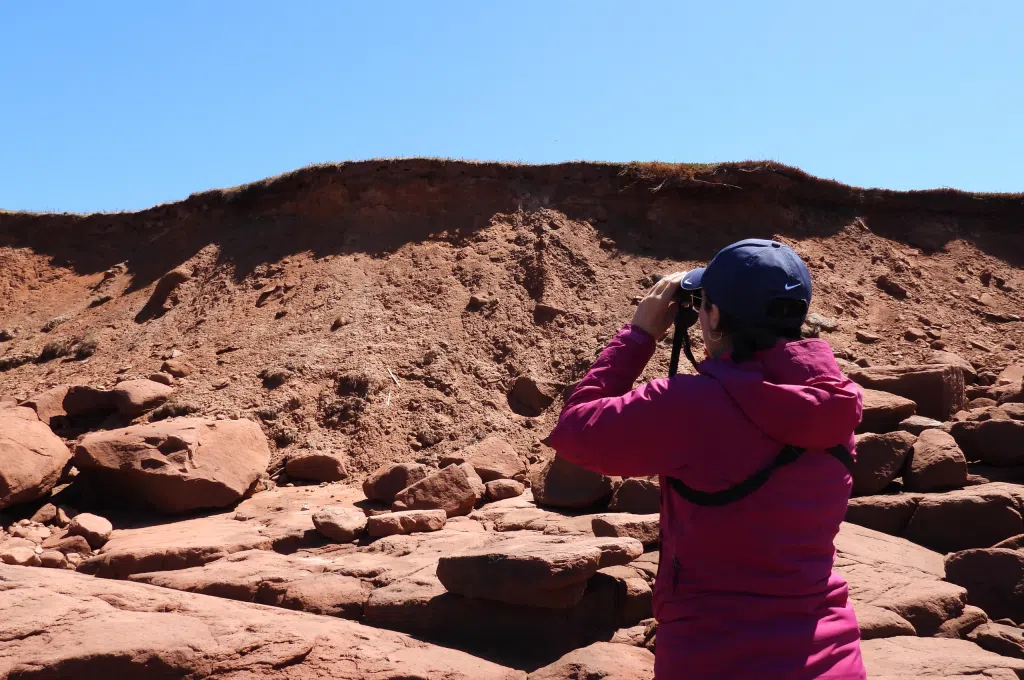
Island Nature Trust began tracking bank swallow populations on Prince Edward Island in 2013, but have since partnered with the Atlantic Canada Bank Swallow Working Group to ramp up surveying efforts in recent years. Beginning in 2023, INT set out to survey the entire coastline of PEI for bank swallow. Over the span of two years and with the support of our amazing partners and volunteers, we succeeded in this goal, surveying over 500km of coastline in both 2023 and 2024, and identifying over 200 distinct colonies.
As with most species, bank swallow are quite dynamic and their nesting sites can change from year to year. For this reason, continuous surveys are required to maintain our knowledge of their nesting locations and help better protect this threatened species.
To achieve this, INT is committed to surveying all portions of PEI’s coast on a regular cycle, collecting data on colony locations, areas of suitable habitat, and breeding phenology. The data collected by INT and our wonderful volunteers is shared with our partners in conservation to help inform future conservation efforts, monitor trends in the population, and inform policy decision-making.
This massive undertaking is not possible without the commitment of our remarkable volunteers. If you too wish to help protect this sweet species, sign up to join our Coastal Guardian Program!
A special thank you to Environment and Climate Change Canada and the PEI Wildlife Conservation Fund for supporting this important work.
Species at Risk: Bobolink
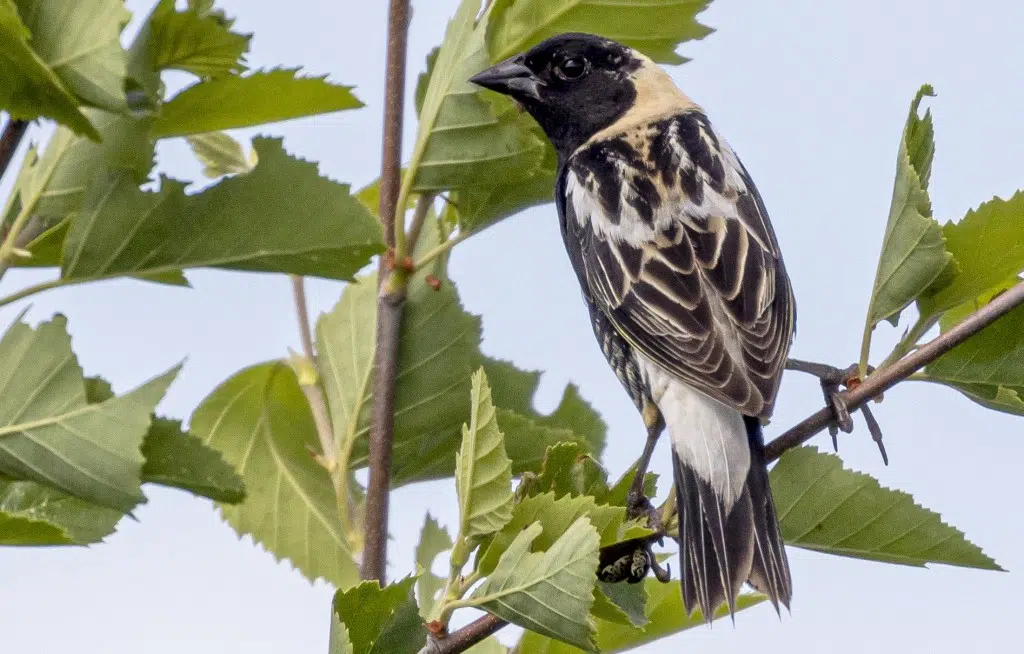
The bobolink (Dolichonyx oryzivorus) is a grassland species, feeding on insects as well as rice and grains, with a preference for managed hay fields in PEI to nest and raise young. Modern practices of cutting hay early for sweeter forage and silage eliminates whole fields as nesting habitat, because the young do not have enough time to fledge before the field is cut and cannot get out of the way of the harvesting equipment. The bobolink was classed as threatened by the Committee on the Status of Endangered Wildlife in Canada (COSEWIC) in 2010 and protected under the federal Species at Risk Act (SARA) in 2017. The bobolink population in Canada has decreased by 88% over the last 40 years.
INT’s Farmland Birds Conservation Program

In 2014, Island Nature Trust began an outreach program aimed at creating greater awareness of barn swallow and bobolink and their habitat needs in Island rural communities. Once Islanders understood what needed to be done, many embraced the practices that give these two birds a fighting chance to successfully raise their young. Volunteer landowners in the Farmland Birds program use simple fridge forms to track important arrival, nesting and departure dates for PEI birds each year. Some also provide access to their land so INT staff can monitor the breeding success of the two species. Now 4 years old, this program is providing local data on populations of these at-risk bird species that can inform national recovery programs in the future.
The following are best management practices that INT advocates for bobolink, barn swallow and bank swallow:
- Delay haying until after July 15th each year, to avoid destroying bobolink nests and young; the Province now offers a financial incentive to landowners under the Alternate Land Use Services (ALUS) program to delay the cut (ask us at the office for more information and contact details)
- If you wish to retain an open, unforested landscape on your property, mow unused fields every 2–3 years to maintain grassland habitat for bobolink and other nesting grassland birds
- Open doors or windows of out buildings by mid-April to allow nesting access for barn swallows
- Install nesting ledges for barn swallows if there are no safe surfaces away from cats, raccoons and other predators in your outbuilding (ledges available at the office)
- Preserve bank swallow nesting colonies by opting not to install rock armour where the colonies occur
- Do not mow or farm right up to coastal edges as this destabilizes the bank and can damage bank swallow nest cavities
For more information about the species listed here and how you can help, check out the following factsheets:
Insect-Eating Birds
Insectivorous birds are those whose diet is mostly made up of insects. They are a crucial part of a healthy ecosystem and also serve as natural pest control. Many species that fall into this category are in global decline. The reasons for these declines are not all known, but may include changes or declines in insect populations due to climate change, pesticides use and habitat loss. At-risk insectivorous birds that nest in Prince Edward Island include the bobolink, barn swallow, bank swallow and common nighthawk.
Agriculture is a significant industry in PEI, and farms provide important habitat for certain insectivorous bird species on the Island. Since 2014, Island Nature Trust has been working with rural landowners to monitor and protect the habitat of two bird species, the bobolink and barn swallow, in farm and grassland landscapes. Both of these species prospered in PEI during the 1700s, when settlers began clearing land and raising barns, but have since disappeared from many Island locales.
The barn swallow (Hirundo rustica) is an aerial insectivore that nests in old built structures. On PEI, barn swallows may be found building their nests inside barns, other farm buildings, or in fishing shacks at the many small craft harbours that dot the coastline. Newer metal outbuildings and locked up doors do not accommodate this species’ needs for mud-based nests attached to rough, unfinished interior wood timbers. The barn swallow was classed as threatened by COSEWIC in 2011 and protected under SARA in 2017. It has seen a decline in population of 76% since the 1980s.
Forest Birds
According to The State of Canada’s Birds published in 2012 by The North American Bird Conservation Initiative, forest bird populations overall have declined by 10% since 1970. Changing forestry practices, degradation of forested wetlands, loss of insect prey, climate change, and habitat loss on wintering grounds are considered threats for many species.
For more information on forest species-at-risk on Prince Edward Island, check out the following factsheets:
- Eastern Wood Peewee Fact Sheet
- Canada Warbler Fact Sheet
- Olive-sided Flycatcher Fact Sheet
- Forest Dwelling Species-At-Risk Guide
Canada Warbler & Olive-sided Flycatcher
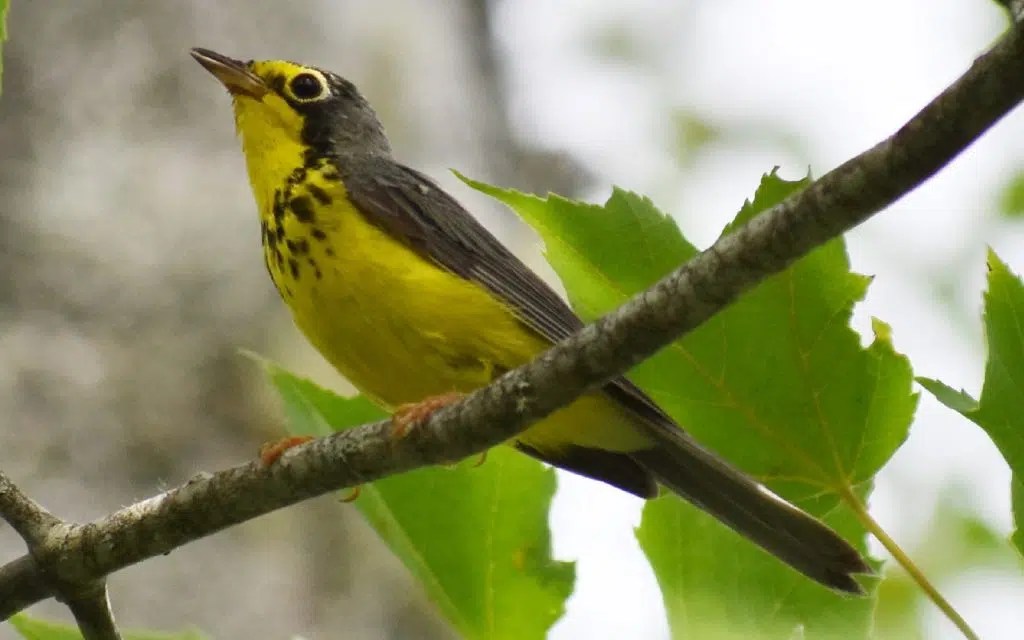
In 2017, Island Nature Trust began an intensive study of the bird communities using forests in some INT and public natural areas, particularly what habitat features drive use by forest-nesting species at risk. During the nesting season in May and June, INT staff conduct dawn point count surveys in forested natural areas across the Island. They record all species heard or seen, making special note of two; the Canada warbler (Cardellina canadensis) and olive-sided flycatcher (Contopus cooperi), both listed as threatened. Canada warbler populations have seen an estimated 71 percent decrease from 1970 to 2012 in Canada. Similarly, olive-sided flycatcher populations have declined 79 percent from 1968 to 2006 in Canada. Habitat assessments conducted at the point count sites establish the key local and landscape-scale habitat features that influence bird diversity and the presence of species at risk in PEI forests.
The data from this study will be considered in tandem with a parallel study of forest bird habitat in Nova Scotia, conducted out of Dalhousie University. It is our hope that the combined work will ultimately inform forest management practices for private woodlot owners, conservation groups and governments. Look here for more information on some of the birds found during our surveys.
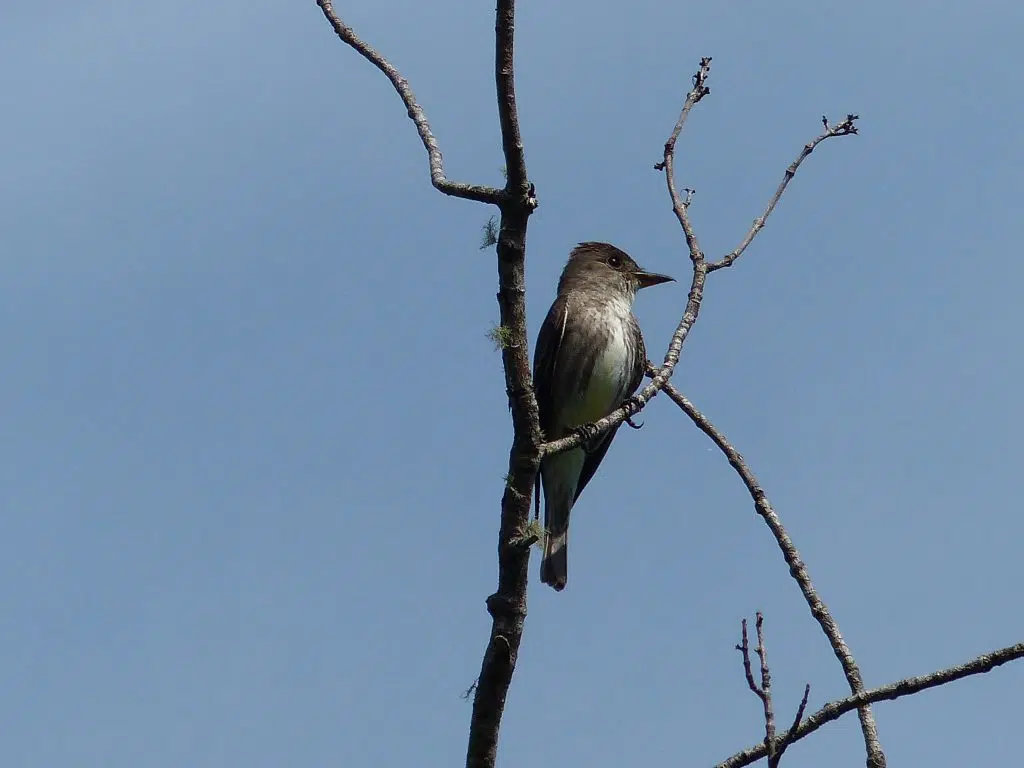
Get in touch
Connect with our team
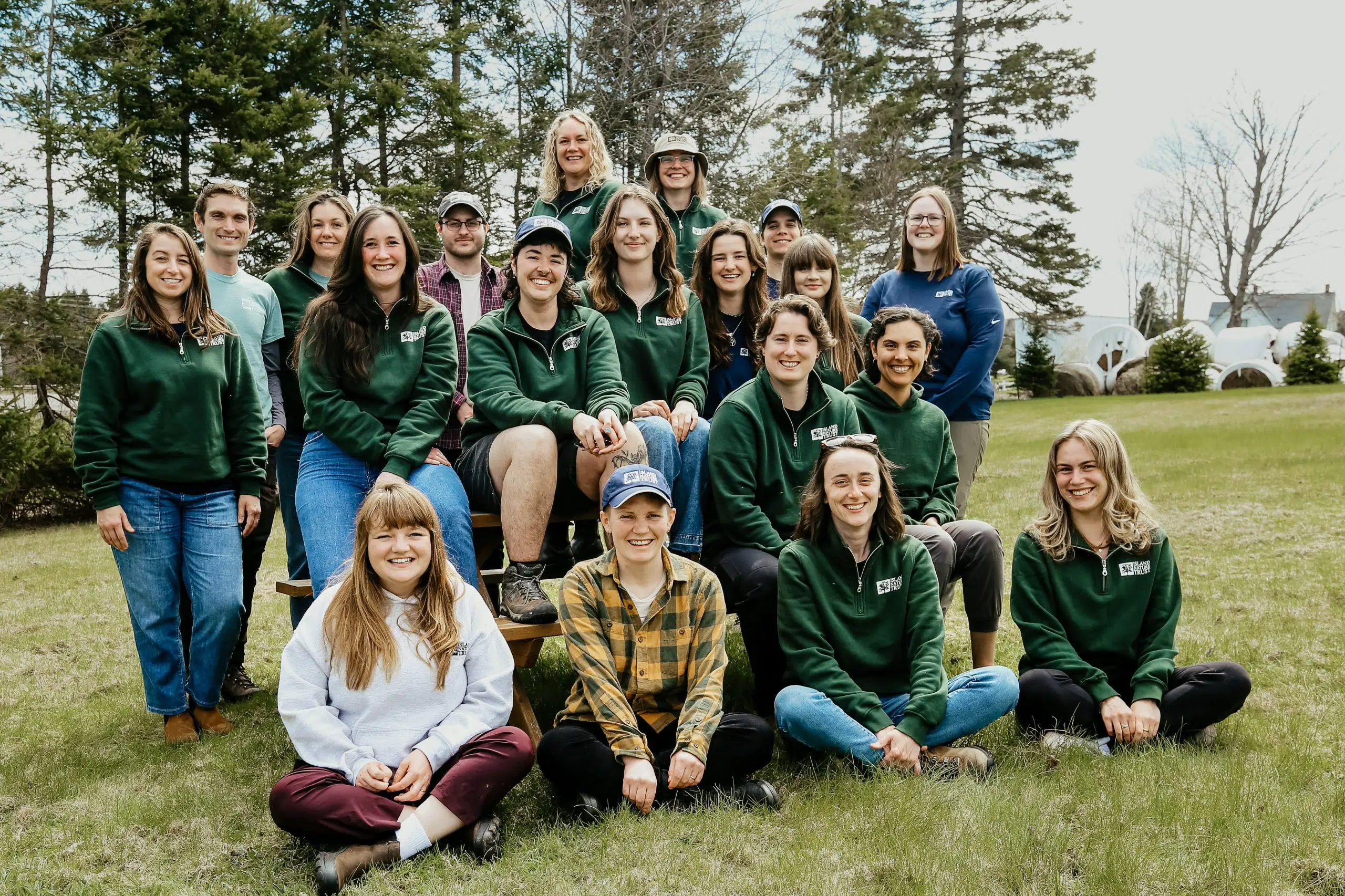
Sign up
To Our
Newsletter
Be the first to know about
future events, news and
campaigns.
Follow Us
#givingbacktonature
